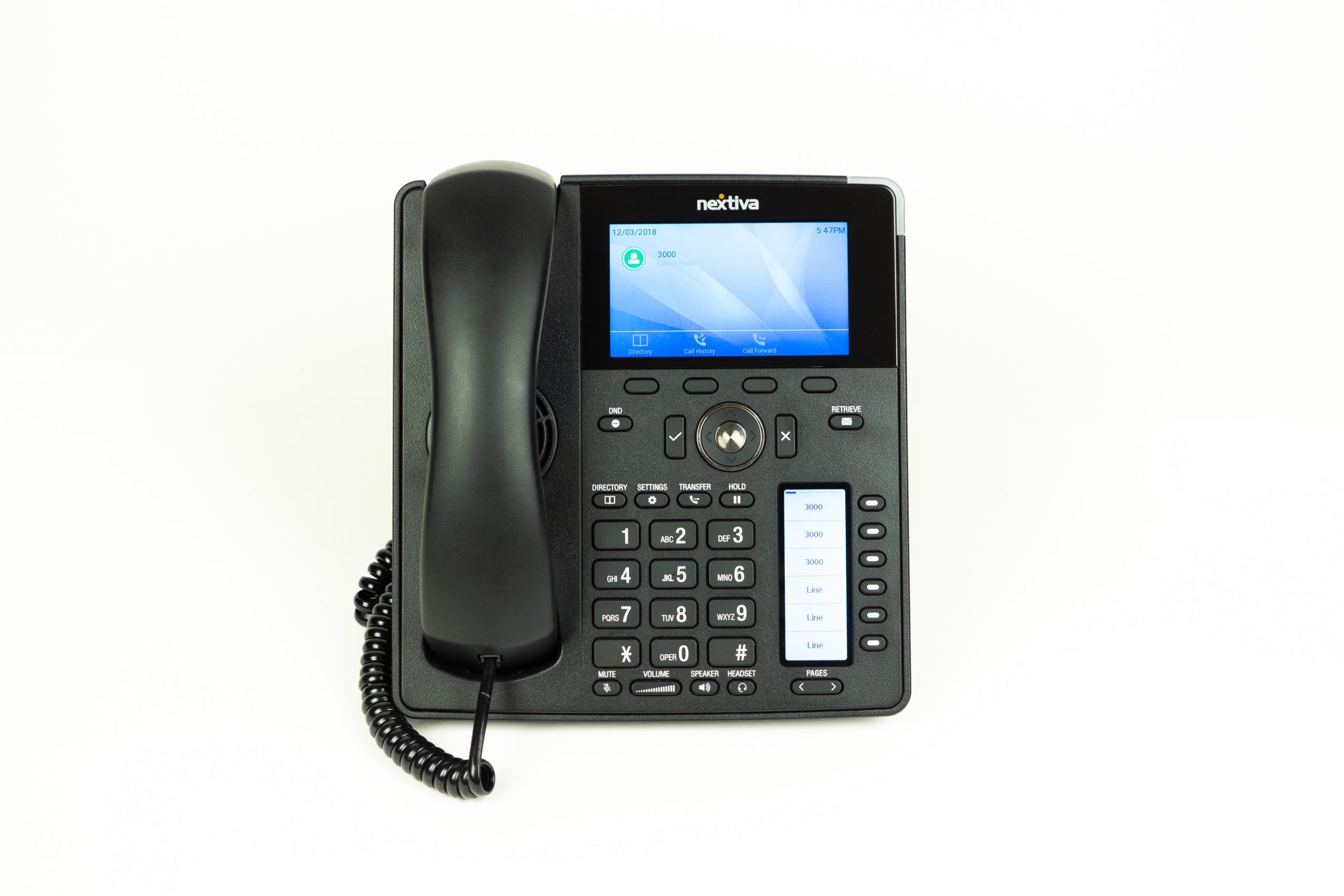A brief introduction to VOIP technology

Voice Over IP or VOIP for short is a subgroup of telecommunication hardware and software that uses the Internet for data transmission instead of a traditional phone line. Compared to traditional telephone services, VOIP technology gives users more robust features and improved performance.
Business or business VOIP services are commonly used by organizations. VOIP phones have also become popular in private homes, especially as landlines have become obsolete.
Need a VOIP phone system for your own business? We recommend checking out CallHippo
Some benefits of the technology include:
- Lower costs to install and maintain
- Scalability for organizations that grow and need more phone lines setup (e.g. call center)
- Call analytics and other useful features for business
- Voicemail delivered to email addresses as well as call to pickup
- Integration with 3rd party software and tools
- Call routing to mobile phone numbers (diverting)
- Call positioning and queue setup
- Ability to work anywhere as long as internet is accessible making it possible for a VOIP system to be distributed across multiple sites and networks even in different cities and states.
- Create conference calls in a matter of seconds with Unified Communications features.
- Improved fault tolerance through simple backup of your PBX unit.
Disadvantages of the technology:
- Can be unreliable if the internet connection is slow or is experiencing issues
- Cannot make calls if internet is down unlike a traditional phone system
PBX systems (Private Branch Exchange)
Short for private branch exchanges, a private telephone network is a central device that makes VOIP possible and allows network traffic to be routed and used within a company. PBX users share a certain set of lines for making phone calls outside of the PBX.
Most medium and large companies utilize a PBX because it is much cheaper than connecting an external phone line to every phone within an organization.
Hosted PBX and Virtual PBX appear to be the same thing. Is it the same?
Although they offer the same features, hosted PBX and virtual PBX units operate on different systems. The outcomes are the same. Some refer to it as a “Virtual PBX service” while others refer to it as a “Hosted PBX” or simply a “business phone system”. In most cases, they run on separate systems but have the same end result.
An example of a platform that can provide a hosted environment or on-site environment is 3CX.
Do VOIP phones require a phone line?
VOIP phone systems don’t rely on the traditional concepts of “phone lines” due to working over the internet and not connecting to the traditional phone network/cellular network backbone.
Some companies however may retain phone lines to use as a fallback in the event of an internet outage in order to maintain phone service.
Uses within businesses & corporations

Due to the cost saving ability of these systems and been very customizable Voice Over IP technology has become very popular in business and corporate environments in some cases totally replacing traditional phone systems or in other cases becoming the main system with some traditional phones retained as a backup option.
According to this document in 2008, 80% of all new Private branch exchange (PBX) lines installed internationally were VoIP. For example, in the United States, the Social Security Administration is converting its field offices of 63,000 workers from traditional phone installations to a VoIP infrastructure carried over its existing data network.
VoIP allows both voice and data communications to be run over a single network, which can significantly reduce infrastructure costs.
The prices of extensions on VoIP are lower than for PBX and key systems. VoIP switches may run on commodity hardware, such as personal computers. Rather than closed architectures, these devices use standard network interfaces making theme more compatible and less restrictive than their traditional counterparts.
Cloud-hosted VOIP systems (PBXaaS)

As with any other SaaS (Software as a Service) solution, ‘Hosted’ or ‘Cloud’ VOIP solutions involve a service provider or telecommunications carrier hosting the prerequisite telephone system as a software solution within their own infrastructure (cloud).
Typically this will be one or more datacentres, with geographic relevance to the end-user(s) of the system. Endpoints, such as VOIP telephones or “softphone” applications (software running on a computer or mobile device), will therefore connect to the VOIP service remotely.
These connections typically take place over public internet links, such as local fixed WAN breakout or mobile carrier services like mobile data.
Self-hosted VOIP systems

Unlike it’s cloud alternative a self-hosted system resides on internal server infrastructure by a business and is typically managed by an I.T consultant or division of a business.
Self-hosted VOIP infrastructure is more costly to install and maintain as you require the servers, software and time to install updates, fix issues and manage uptime etc.
The advantages of a self-hosted system however include:
- Reduced dependence on 3rd parties
- On-site storage of data for compliance and privacy purposes
- Ability to customize servers to your liking
- Full control of other aspects of the hardware such as upgrades
This approach is typically used by institutions like Governments and Healthcare where data security is very important and information needs to be kept onsite for legal compliance.
Different features available in many VOIP systems:

Whilst there are a vast number of solutions on the market many systems share the same features, some of these include the following.
Caller ID
Voice over IP protocols and equipment provides support for a caller ID that is PSTN compatible. Many VOIP service providers also allow callers to configure custom caller ID information to be displayed on a physical phone unit.
Custom voice mail and cut-off time
This feature enables a business to setup their own custom voice mail or introduction recording for callers on-hold. Many systems also have options to specify business hours so the phone system can automatically stop accepting calls after hours and take messages ready for the next day.
QOS (Quality Of Service)
QOS enables an organization to set network limits to save bandwidth and resources, an example of a QOS policy might be to drop calls after an extended period of time and or set limits to the number of concurrent calls on each line to prevent overwhelming a call center.
Call recording and archiving
Often hosted phone VOIP solutions will allow you to setup call recording and archiving for legal compliance purposes and also to use for coaching and training within a business environment.
Call statistics & analytics
Phone systems will often log statistical data and make it available through an online dashboard which includes information such as average call duration, phone/staff member with the most calls, busiest times of the day based on phone calls and average location of callers.
This information can assist a business in improving it’s efficiency and identify ways to improve response time.
Some background history of the technology

Packet voice was demonstrated for the first time in 1973 as part of a flight simulator application that ran on the early ARPANET. With uncompressed pulse-code modulation (PCM) digital speech packets with a bit rate of 64 kbps, real-time voice communication was not possible.
Fumitada Itakura of Nagoya University and Shuzo Saito of Nippon Telegraph and Telephone (NTT) proposed linear predictive coding (LPC) in 1966 as a speech coding data compression algorithm. LPC algorithms are still used for audio coding in modern VoIP technology.
The commercial viability of IP telephony was considered to be infeasible until VocalChat was introduced in the early 1990s.
By the late 1990s, the first softswitches were available, and new protocols were gaining popularity. The proliferation of high-bandwidth, always-on Internet connections to homes and businesses has given rise to an industry of Internet telephony service providers (ITSPs).
VoIP became more popular and entrepreneurship increased with the advent of open-source telephony software and continues to grow in popularity today with new technologies and innovations.
Conclusion
Thank you for reading this glossary entry on our website, to see other technical definitions check out our tech glossary for more informational resources.

AGR Technology is an Australian business based in Shepparton,Victoria providing a range of business services such as Software Development, Web Design/Hosting and more across different parts of Australia.
We are dedicated to providing high-tech solutions through our software products, B2B services and other ventures to help end-users and businesses alike get the most out of their computing.
You can also visit our blog for different tips and tricks, free software and YouTube channel for our video content.
*Image credits & Source(s) cited:
“Attention Required!” Cloudflare, pixabay.com/photos/internet-cyber-network-finger-3563638/. Accessed 19 Oct. 2021.
[All other images in use are public domain sourced from Bing.com]
“Voice over IP” Wikipedia, 23 Aug. 2002, en.wikipedia.org/wiki/Voice_over_IP. Accessed 30 Dec. 2021.
Related content from our technology glossary:
IaaS (Infrastructure As A Service)
Best Cell Phone Signal Boosters for Reliable Reception (USA)
What is a Podcast Directory Website?
![logo-new-23[1] logo-new-23[1]](https://agrtech.com.au/wp-content/uploads/elementor/thumbs/logo-new-231-qad2sqbr9f0wlvza81xod18hkirbk9apc0elfhpco4.png)
